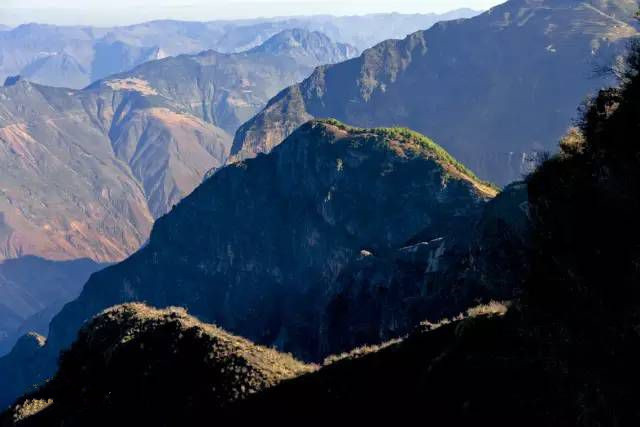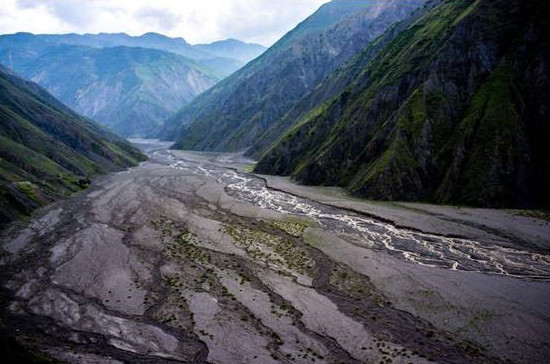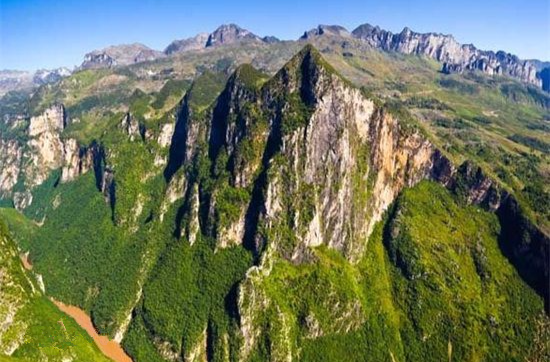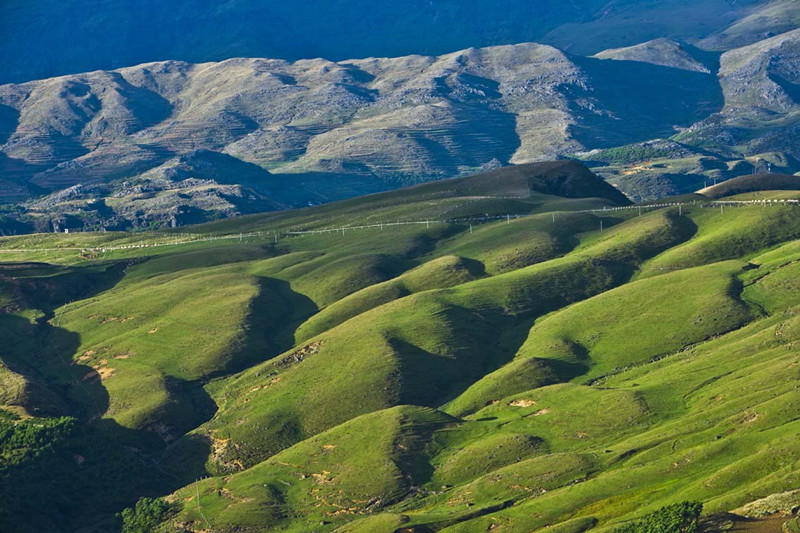Wumengshan Mountain Ranges in Yunnan, Sichuan and Guizhou
Overview
The Wumeng Mountain Range, named after the historical Wumeng Tribe and Wumeng Prefecture, is the largest mountain range in the eastern Yunnan Plateau. It stretches across the border between Yunnan (云南) and Guizhou (贵州) provinces, as well as the junction of Sichuan (四川), Guizhou, and Yunnan. Geographically, it is located between 103°10′ to 103°30′ East longitude and 25°20′ to 27°45′ North latitude. The range begins in the northeast at Zhenxiong County (镇雄县), Zhaotong City (昭通市), Yunnan, and Bijie City (毕节市), Guizhou. It travels southwest through Hezhang County (赫章县) and Weining County (威宁县) in Guizhou, re-entering Yunnan at the border between Ludian County (鲁甸县) and Xuanwei City (宣威市). It reaches Xuanwei, Huize County (会泽县), and Qujing City (曲靖市), terminating at the eastern side of the Gongshan River (功山河)—Xiaojiang Valley (小江谷地).
The mountain range runs in a northeast-southwest direction, with an approximate length of 250 kilometers and an average elevation of about 2500 meters.
The Wumeng Mountain Range consists of three mountain chains:
- The western chain is the highest, with an average elevation above 2100 meters; the highest peak, Guniu Mountain (牯牛山), reaches 4017 meters.
- The middle chain has peaks generally above 2000 meters.
- The eastern chain has the lowest elevation, with peaks generally below 2000 meters; the highest peak, Jiu Cai Ping (韭菜坪), located in Guizhou, stands at 2900 meters.
The mountaintops are gently undulating, representing a residual plateau surface of the Yungui Plateau, having undergone uneven uplift. The region features numerous basins and deep valleys, with extensive karst topography, including residual hills, solution depressions, karst basins, gorges, and caves.
Rivers in the Region
The Wumeng Mountains contain several rivers, including the Niulan River (牛栏江), Xiaojiang River (小江), Pudu River (普渡河), Nanpan River (南盘江), and Beipan River (北盘江).
Climate Impact
Due to its high elevation, the mountain range significantly obstructs the winter cold winds from advancing westward and southward along the southern edge of the Sichuan Basin and the Guizhou Plateau. This has a critical impact on the formation of the quasi-stationary front in Kunming (昆明) and Yunnan’s climate. There are notable differences in climate, geography, and agricultural natural resources on either side of the mountain.
Natural Resources
The mountainous region is rich in forest resources and mineral resources, including lead, zinc, copper, and coal. A famous line from the Red Army’s Long March poem mentions, “Wumeng majestic, walking like a mud ball” (乌蒙磅礴走泥丸).
Geographic Location
- Name: Wumeng Mountain Range (乌蒙山脉)
- Also Known As: Wumeng Mountain (乌蒙山)
- Geographical Position: Edge of Yunnan and Guizhou provinces
- Direction: Northeast-Southwest
- Length: 250 km
- Starting Point: Zhenxiong County (镇雄县), Zhaotong City (昭通市), Yunnan, and Bijie City (毕节市), Guizhou
- End Point: Eastern side of Gongshan River (功山河) — Xiaojiang Valley (小江谷地)
- Main Peak: Guniu Mountain (牯牛山)
- Average Elevation: About 2500 m
Major Peaks
- Guniu Mountain (牯牛山): Named for its resemblance to an ox when viewed from the west of Kunming’s Dongchuan District (东川区). It is a block mountain and the highest peak in the western chain of the Wumeng Mountains, with an elevation of 4017 meters.
- Jiu Cai Ping (韭菜坪): Located at the border of Zhongshan District (钟山区) in Liupanshui City (六盘水市) and Hezhang County (赫章县), this peak is known for its wild chives and stands at 2900 meters, making it the highest peak in Guizhou.
- Yao Mountain (药山): Situated in Qiaojia County (巧家县), Yunnan, its highest peak reaches 4041 meters, noted for the abundance of medicinal herbs in the region.
- Dahaicui Mountain (大海草山): Located in Huize County (会泽县), Yunnan, its highest peak is 4017.3 meters.
Natural and Mineral Resources
The Wumeng Mountain Range boasts a diverse array of biological resources, with 3184 species of medicinal plants identified. Additionally, over 30 types of minerals have been found, including lead, zinc, copper, and iron.
Tourist Attractions
Some notable tourist spots in the Wumeng Mountain area (4A rating and above):
- Bijiang Hundred Miles Rhododendron Scenic Area (毕节市百里杜鹃景区): AAAAA, located in Bijie City (毕节市), Guizhou.
- Bijiang Hundred Miles Rhododendron Jump Flower Slope Scenic Area (毕节市百里杜鹃跳花坡景区): AAAA, also in Bijie City (毕节市).
- Huize Dahuicaoshan Scenic Area (曲靖会泽大海草山景区): AAAA, located in Qujing City (曲靖市), Yunnan.
Historical and Cultural Significance
The name “Wumeng” comes from the Yi ethnic group’s tribal name, as the region was historically inhabited by the Wumeng tribe. The name also derives from the local tribal chief’s name.
Cultural Relics
Significant cultural heritage sites in the Wumeng Mountain area include:
- Kele Ruins (赫章可乐遗址): Located in Bijie City (毕节市), Guizhou.
- Huize Guild Hall (会泽会馆): Located in Qujing City (曲靖市).
- Datun Tusi Manor (大屯土司庄园): Located in Bijie City (毕节市).
- Dadong (盘县大洞): Located in Liupanshui City (六盘水市).
Important Events
- South Copper North Transport (南铜北运): This transport system was vital during the Qing Dynasty, particularly from 1726 to 1911.
- Reformation of the Wumeng Prefecture (乌蒙府改土归流): In 1726, the Qing court approved the administrative restructuring of the Wumeng region.
How to Get There
To reach the Wumeng Mountain Range, travelers can fly to Kunming (昆明) and then take a bus or drive towards Zhaotong City (昭通市) or Bijie City (毕节市). The range is accessible through several routes connecting these cities.
Travel Tips
- Best Time to Visit: The ideal time to explore the Wumeng Mountains is during spring and autumn when the weather is mild and scenery beautiful.
- Gear Up: Ensure to wear sturdy hiking boots and bring necessary climbing gear if you plan to hike the peaks.
- Local Cuisine: Try the local dishes, especially those featuring medicinal herbs and mountain delicacies.
- Respect Nature: When exploring, practice Leave No Trace principles to preserve the natural beauty of the area.















